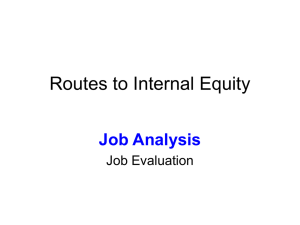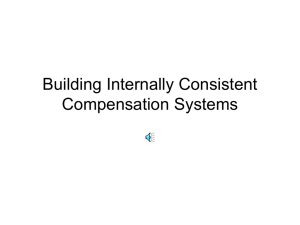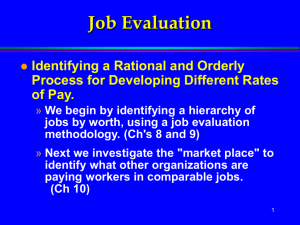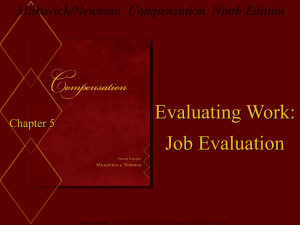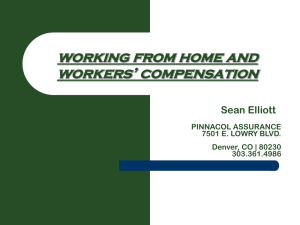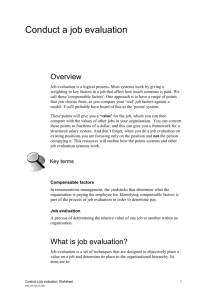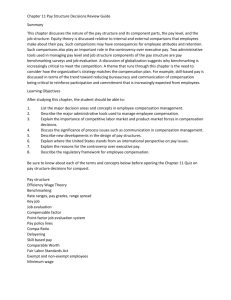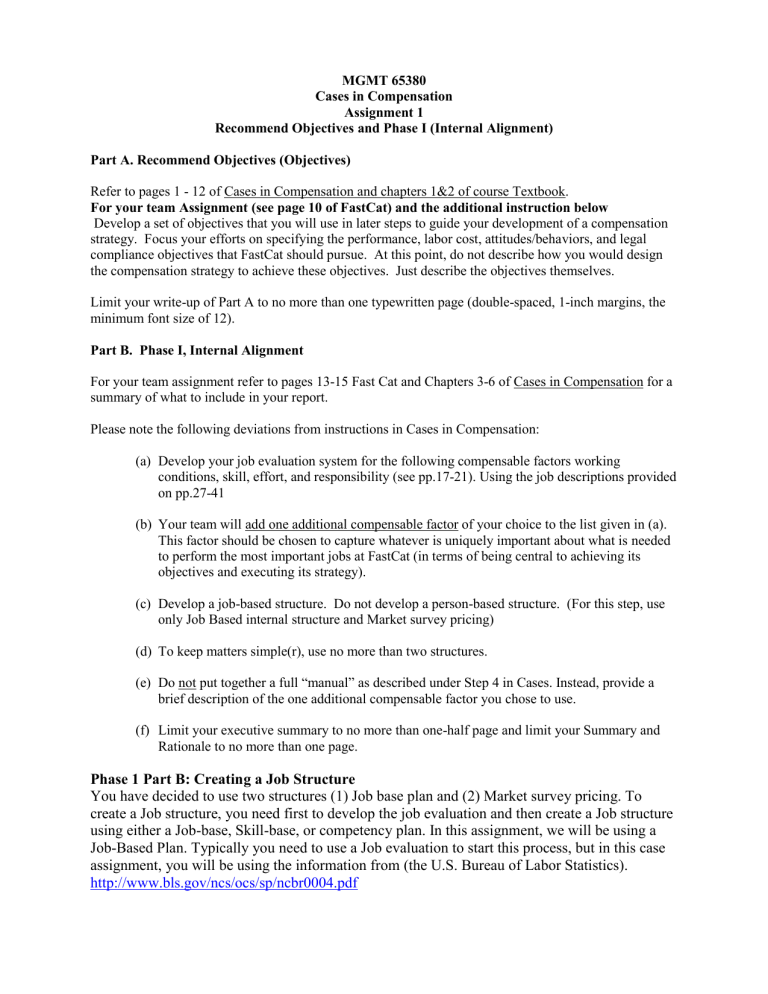
MGMT 65380 Cases in Compensation Assignment 1 Recommend Objectives and Phase I (Internal Alignment) Part A. Recommend Objectives (Objectives) Refer to pages 1 - 12 of Cases in Compensation and chapters 1&2 of course Textbook. For your team Assignment (see page 10 of FastCat) and the additional instruction below Develop a set of objectives that you will use in later steps to guide your development of a compensation strategy. Focus your efforts on specifying the performance, labor cost, attitudes/behaviors, and legal compliance objectives that FastCat should pursue. At this point, do not describe how you would design the compensation strategy to achieve these objectives. Just describe the objectives themselves. Limit your write-up of Part A to no more than one typewritten page (double-spaced, 1-inch margins, the minimum font size of 12). Part B. Phase I, Internal Alignment For your team assignment refer to pages 13-15 Fast Cat and Chapters 3-6 of Cases in Compensation for a summary of what to include in your report. Please note the following deviations from instructions in Cases in Compensation: (a) Develop your job evaluation system for the following compensable factors working conditions, skill, effort, and responsibility (see pp.17-21). Using the job descriptions provided on pp.27-41 (b) Your team will add one additional compensable factor of your choice to the list given in (a). This factor should be chosen to capture whatever is uniquely important about what is needed to perform the most important jobs at FastCat (in terms of being central to achieving its objectives and executing its strategy). (c) Develop a job-based structure. Do not develop a person-based structure. (For this step, use only Job Based internal structure and Market survey pricing) (d) To keep matters simple(r), use no more than two structures. (e) Do not put together a full “manual” as described under Step 4 in Cases. Instead, provide a brief description of the one additional compensable factor you chose to use. (f) Limit your executive summary to no more than one-half page and limit your Summary and Rationale to no more than one page. Phase 1 Part B: Creating a Job Structure You have decided to use two structures (1) Job base plan and (2) Market survey pricing. To create a Job structure, you need first to develop the job evaluation and then create a Job structure using either a Job-base, Skill-base, or competency plan. In this assignment, we will be using a Job-Based Plan. Typically you need to use a Job evaluation to start this process, but in this case assignment, you will be using the information from (the U.S. Bureau of Labor Statistics). http://www.bls.gov/ncs/ocs/sp/ncbr0004.pdf Step 2: Job-Based Plan Things to consider when using Job-Based Plan First, you need to decide on what compensable factors to use. In this case, you have been provided with four (Knowledge, Job controls and complexity, contacts, physical environment). You need to add one more. Remind from our lectures, we looked at other factors such as skills, responsibility, effort). For each compensable factor, you need specific sub-factors. For example, if I choose skills as my additional compensable factor, I can select two sub-factors: education level and the degree of technical skills. Next: Look up the point For example, Sale Jobs Points Knowledge knowledge for simple routine 50 Skills to operate simple equipment 50 Job control Task clear cut 100 Contact Minimum contact 30 Physical environment Low risk 10 Moderate risk 25 Skills Education level 5 Technical skills 15 275 Step: For the compensable factor you will include, you will have to create the point scheme. To do that, you will need to decide the compensable factors, degrees, and weights of the factor For example, if you chose skill as a compensable factor, you will create four degrees for each sub-factor under skill. Educational level 1=High School/GED 2=Associates 3=Bachelors 4=Masters/Graduate Experience 1=0-1 experience 2= 2-3 3=4-5 5=6 and Above Next, assign weight to this factor, say 20% and Next, scale weight by weighting the weight across each subfactor (for example, for the compensable “skill,” you will assign scale the weight assigned to skill across the sub-factors (educational level and experience) all of these decisions will depend on what information you Using the job descriptions, you will need to assign degrees and weights to each of the compensable factors Degree (1,2,3,4) Weight Points Working Condition 5% Environmental Hazard Skill 30% Education Level 10 Experience 20 Effort 20% Physical Mental Responsibility 35% Effort of Error Inventiveness Contact 10% Basics Specific Points are then calculated by multiplying the degrees by the weights. Step 3 Develop Job Structure- We will discuss this in class during our review session (you will be using two structures). See chapter five. Note Keep in mind that the most important part of the assignment is to explain how your recommended internal structure(s) will help FastCat achieve its objectives. Also keep in mind the importance of costs, competencies, and contracts. Application of textbook reading to the assignment is also important. Limit the text of your write-up of Part B to no more than Four typewritten pages (double-spaced, 1-inch margins, font size of 12). Use up to 3 exhibits. One exhibit should report job evaluation points (total and for each compensable factor) for each job. Submit the following on Brightspace (in Excel) the points on each compensable factor and total points for each job on Thursday, April 02 by 11:59 pm. MGMT 65380 PHASE I GRADING CRITERIA In grading your team submission, I will give attention to the following factors in your report. Part A. Recommend compensation objectives Specific objectives Is it really strategic? Different, value-added Part 2. Align compensation objectives to business strategy Discuss financials, customer metrics Discuss employee satisfaction metrics Embedded in FastCat context Clarify “So What?” for internal alignment Policy recommendation– e.g., flexible, minimize differences, etc. Person/job based Clarify relationship between structure(s) & compensation objectives What will you be influencing? Link Job-based plan to objectives Work/business-related? Why bother with it? (Distinguish) Recognize pros & cons Minimize unintended consequences Report – results: Structure(s) Appeal mechanism Part 3 Recommend/justify number of structure(s) Handle mechanics Single-multiple Types of plans The process to derive plan Compensable factors/skill blocks Evaluation/certification Weights Communication/training in use of plan Evaluate usefulness Administrative “costs” – a bureaucratic burden?
